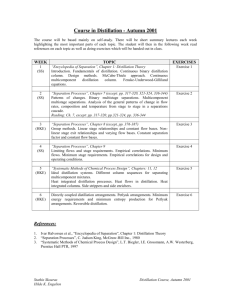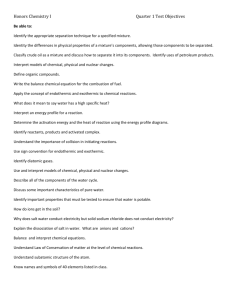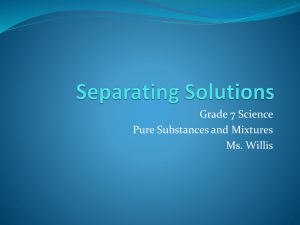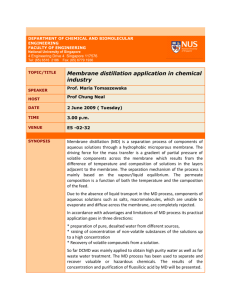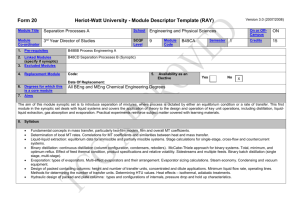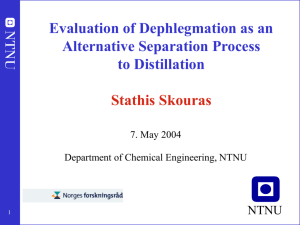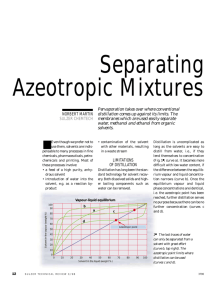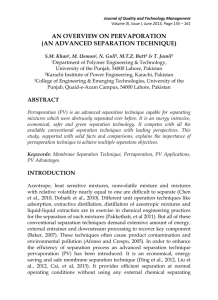Energy demand of biofuel production applying distillation and/or
advertisement
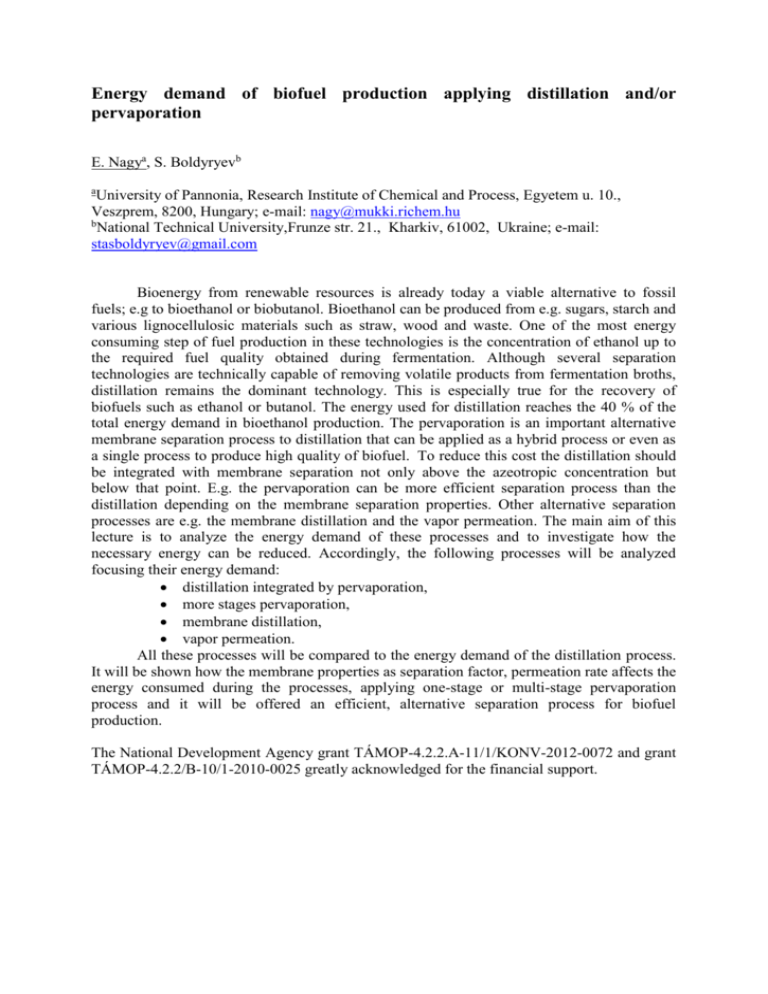
Energy demand of biofuel production applying distillation and/or pervaporation E. Nagya, S. Boldyryevb a University of Pannonia, Research Institute of Chemical and Process, Egyetem u. 10., Veszprem, 8200, Hungary; e-mail: nagy@mukki.richem.hu b National Technical University,Frunze str. 21., Kharkiv, 61002, Ukraine; e-mail: stasboldyryev@gmail.com Bioenergy from renewable resources is already today a viable alternative to fossil fuels; e.g to bioethanol or biobutanol. Bioethanol can be produced from e.g. sugars, starch and various lignocellulosic materials such as straw, wood and waste. One of the most energy consuming step of fuel production in these technologies is the concentration of ethanol up to the required fuel quality obtained during fermentation. Although several separation technologies are technically capable of removing volatile products from fermentation broths, distillation remains the dominant technology. This is especially true for the recovery of biofuels such as ethanol or butanol. The energy used for distillation reaches the 40 % of the total energy demand in bioethanol production. The pervaporation is an important alternative membrane separation process to distillation that can be applied as a hybrid process or even as a single process to produce high quality of biofuel. To reduce this cost the distillation should be integrated with membrane separation not only above the azeotropic concentration but below that point. E.g. the pervaporation can be more efficient separation process than the distillation depending on the membrane separation properties. Other alternative separation processes are e.g. the membrane distillation and the vapor permeation. The main aim of this lecture is to analyze the energy demand of these processes and to investigate how the necessary energy can be reduced. Accordingly, the following processes will be analyzed focusing their energy demand: distillation integrated by pervaporation, more stages pervaporation, membrane distillation, vapor permeation. All these processes will be compared to the energy demand of the distillation process. It will be shown how the membrane properties as separation factor, permeation rate affects the energy consumed during the processes, applying one-stage or multi-stage pervaporation process and it will be offered an efficient, alternative separation process for biofuel production. The National Development Agency grant TÁMOP-4.2.2.A-11/1/KONV-2012-0072 and grant TÁMOP-4.2.2/B-10/1-2010-0025 greatly acknowledged for the financial support.



